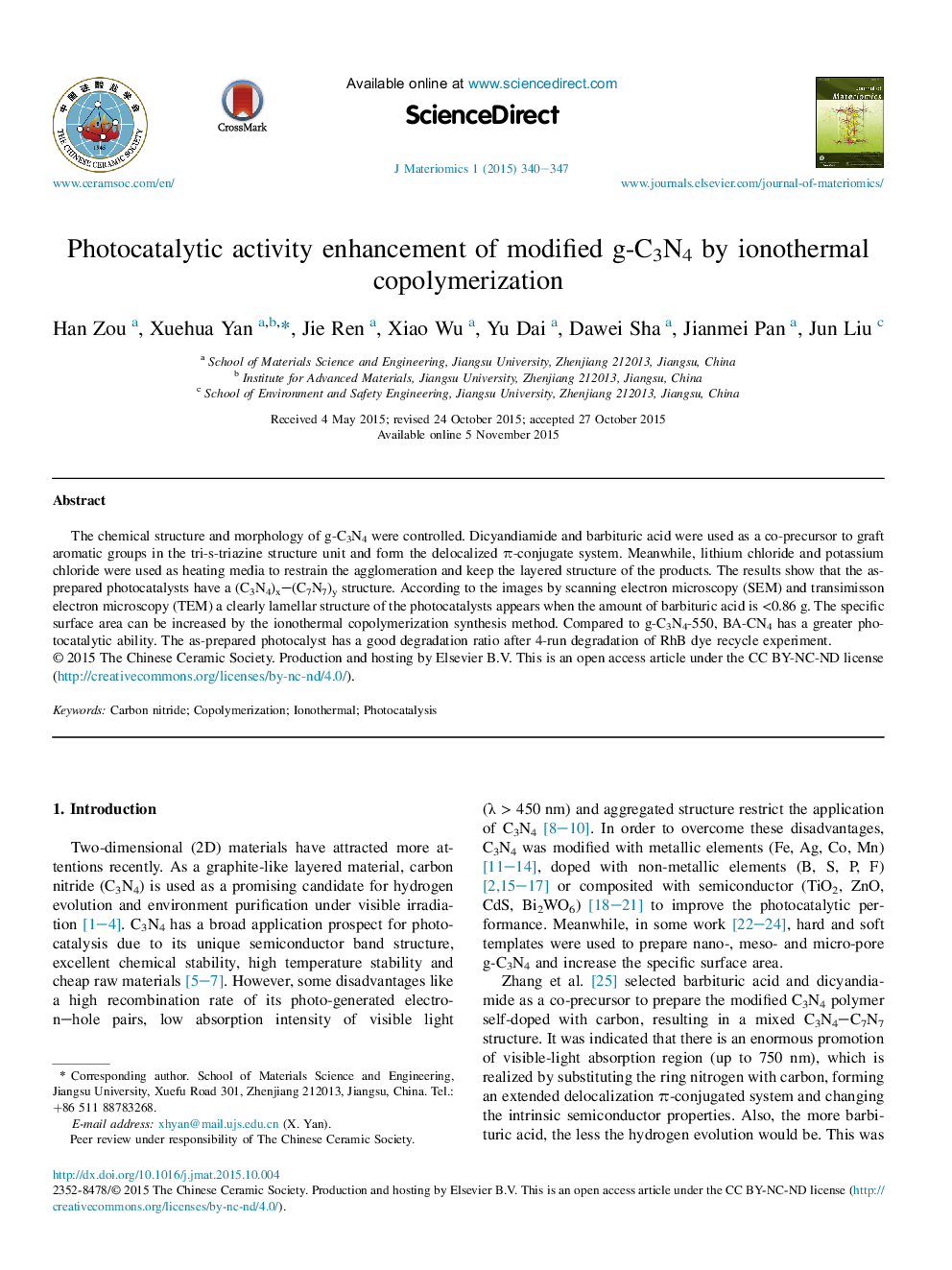| Article ID | Journal | Published Year | Pages | File Type |
|---|---|---|---|---|
| 1515151 | Journal of Materiomics | 2015 | 8 Pages |
The chemical structure and morphology of g-C3N4 were controlled. Dicyandiamide and barbituric acid were used as a co-precursor to graft aromatic groups in the tri-s-triazine structure unit and form the delocalized π-conjugate system. Meanwhile, lithium chloride and potassium chloride were used as heating media to restrain the agglomeration and keep the layered structure of the products. The results show that the as-prepared photocatalysts have a (C3N4)x–(C7N7)y structure. According to the images by scanning electron microscopy (SEM) and transimisson electron microscopy (TEM) a clearly lamellar structure of the photocatalysts appears when the amount of barbituric acid is <0.86 g. The specific surface area can be increased by the ionothermal copolymerization synthesis method. Compared to g-C3N4-550, BA-CN4 has a greater photocatalytic ability. The as-prepared photocalyst has a good degradation ratio after 4-run degradation of RhB dye recycle experiment.
Graphical abstractWe prepared modified g-C3N4 via an ionothermal copolymerization procedure using dicyandiamide and barbituric acid as the co-precursors and lithium chloride and potassium chloride as the heating mediums. Sample of BA-CN4 compared with g-C3N4-550 has a huge promotion of photocatalytic ability. Furthermore, we calculate an optimal x:y value in (C3N4)x–(C7N7)y which has the best photocatalytic ability. The outstanding visible-light absorption properties and photocatalytic activities of samples are shown in the figures above.Figure optionsDownload full-size imageDownload as PowerPoint slide
